Lead generation is an indispensable part of business.
If you want to have paying customers, you need to gather a reliable stream of leads.
That’s the bottom line.
But generating leads isn’t as easy as one might think. In fact, it requires quite a bit of finesse and a whole lot of time.
Reports show that 65% of businesses say generating traffic and leads is their top marketing challenge.
That doesn’t surprise us at all.
There is encouraging news though.
Marketers now have a lot more avenues to target potential customers. At the forefront of that is social media.
And if we’re talking about the highest-quality leads, LinkedIn is the clear winner.
It’s a bit shocking, we know.
You expect a giant like Facebook to be leading the pack.
Not in this case. More than 80% of B2B leads sourced from social media come from LinkedIn.
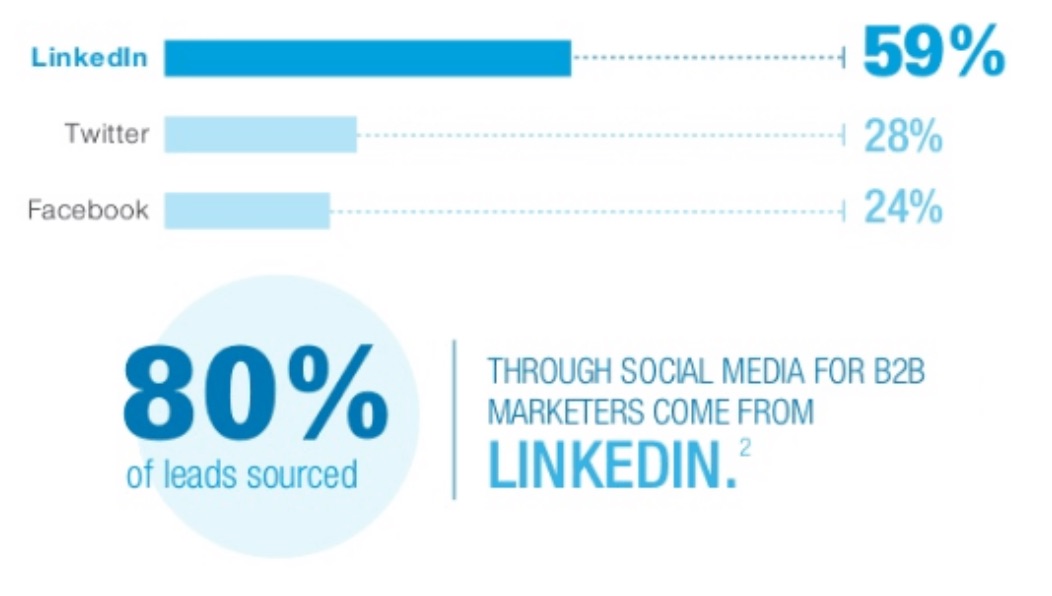
That goes to show the power of this platform.
Here’s the kicker though: many people are failing at using LinkedIn for lead generation.
They’re spending too much time in the process. And they do not see a return on that time investment.
That’s a frustrating problem to have, and we’ll show you how to fix it.
Here’s how you can generate leads on LinkedIn without wasting your time.
1. Optimize your profile for connecting
This may seem basic, but your profile matters a lot. In many cases you’ll be connecting with people you don’t know. Because of this, you need to make sure your profile is optimized as much as possible, or else you could be marked as a spammer (on top of getting poor results).
What users see when you request to connect: To understand the most important parts of your profile, you need to look at what LinkedIn users see.
When you send an invitation to another user, they can view it in two ways.
In their notifications bar, they will see a mini preview with your name, title, and the start of any message you sent:

Since these people don’t know you, you won’t get many invitations accepted just from this.
In the best case scenario, they’ll want to learn more about you and this is where you need to start optimizing.
Your name and picture: we’re guessing you’re pretty stuck on your name, so we’ll let you keep it as it is.
Now, with the picture, you have a little bit of leeway.
Let us be clear upfront: you need a profile picture. No one will take you seriously without one.
Ideally, get a professional headshot done.

If you can’t do that, find a white wall somewhere, put on a professional outfit, and have someone take a picture with your smartphone. It won’t be the same quality as a professional picture, but it’ll be good enough—phone cameras are pretty good these days.
Your title: LinkedIn calls it your “professional headline.” When you’re logged in, you can click it and type in whatever you want to say:

Typically, you’ll want your job title(s) in here as well as any other impressive titles you hold.
Take a second, and think about the type of people you’ll be connecting with.
If you’re going after smaller companies, you’ll likely be targeting CEOs.
So, if you were in fact targeting CEOs, you’d want something like:
CEO of (your business)
If that’s not true, try to find a term that’s on a similar level that describes what you do:
- CTO
- CMO
- Founder
- President
Rounding out your profile: Assuming you nail those aspects of your invitation, the person you invited will likely check out your full profile (not many will connect just based on the invitation).
The main thing they’re looking for is to ascertain whether or not you’re legitimate.
There’s nothing fancy you need to do here other than making sure your profile is completely filled out.
List all your past jobs and the things you accomplished at each of those jobs.
In addition, we recommend adding a line that shows you’re open to connecting with new people. You can even copy mine:

2. Target the decision makers
It’s imperative you consider the sales cycle when you’re generating leads.
We are referring to the entire process it takes for you to sell a product or a service.
It includes everything, i.e., generating a lead, nurturing that lead, and eventually making the sale.
Here’s a map of what a typical sales cycle can look like:
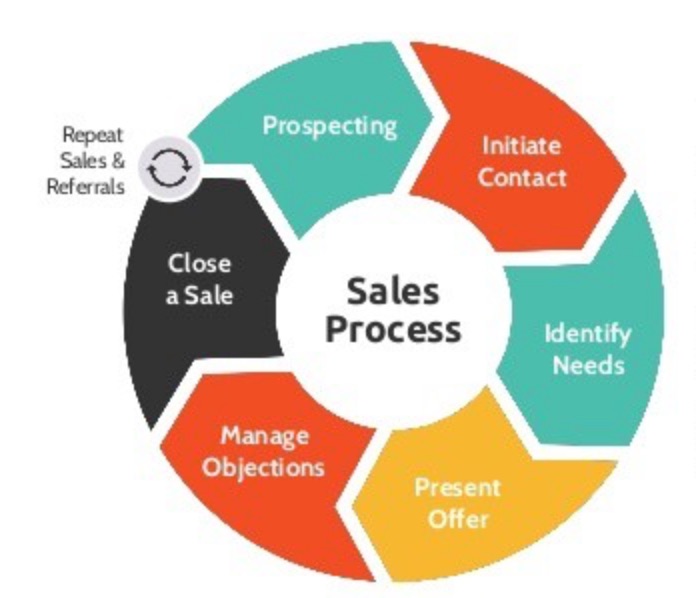
Some of us have the good fortune of being in a niche where it can take as little as a few minutes to close a sale.
For others, it can take months and even years.
Whatever camp you fall in, there is a simple solution to shorten the sales cycle.
Find the decision maker.
Here’s what we mean.
Unless you’re targeting a solopreneur, most businesses have select people who ultimately make the purchasing decisions.
Wouldn’t it be wise to direct your efforts at someone with authority to close the deal?
Of course, it would!
Now, the decision maker is not always the CEO. In fact, it’s rarely the case for most businesses.
We’re not saying you shouldn’t target CEOs.
It depends on what you’re selling, what business needs it will serve, and what your goals are.
Let’s say you’re a freelance writer looking for new clients.
The best people to target when prospecting would be marketing managers or someone in that field.
Anyone else would likely be a waste of your time.
The decision makers usually have the following positions:
- HR director
- Marketing director
- Sales director
These are mainly for B2B leads, but the premise doesn’t change when you’re targeting individual consumers.
There’s usually (not always) someone they have to consult with before making a purchasing decision.
Tailor your efforts and your messaging to take that fact into account.
3. Follow up with old leads before targeting new ones
We’re sure you’ve heard that lead generation is a numbers game.
Target enough people, and eventually you’ll land a sale.
That’s true in a sense.
But the quality of these leads is also important.
Many people collect a bunch of leads, initiate contact, and stop there.
Then, they restart the process.
The problem with that?
There’s no follow-up.
And if you know a thing or two about lead generation, you know the follow-up is crucial.
We know 80% of sales need five follow-ups, but almost 50% of people only send one.
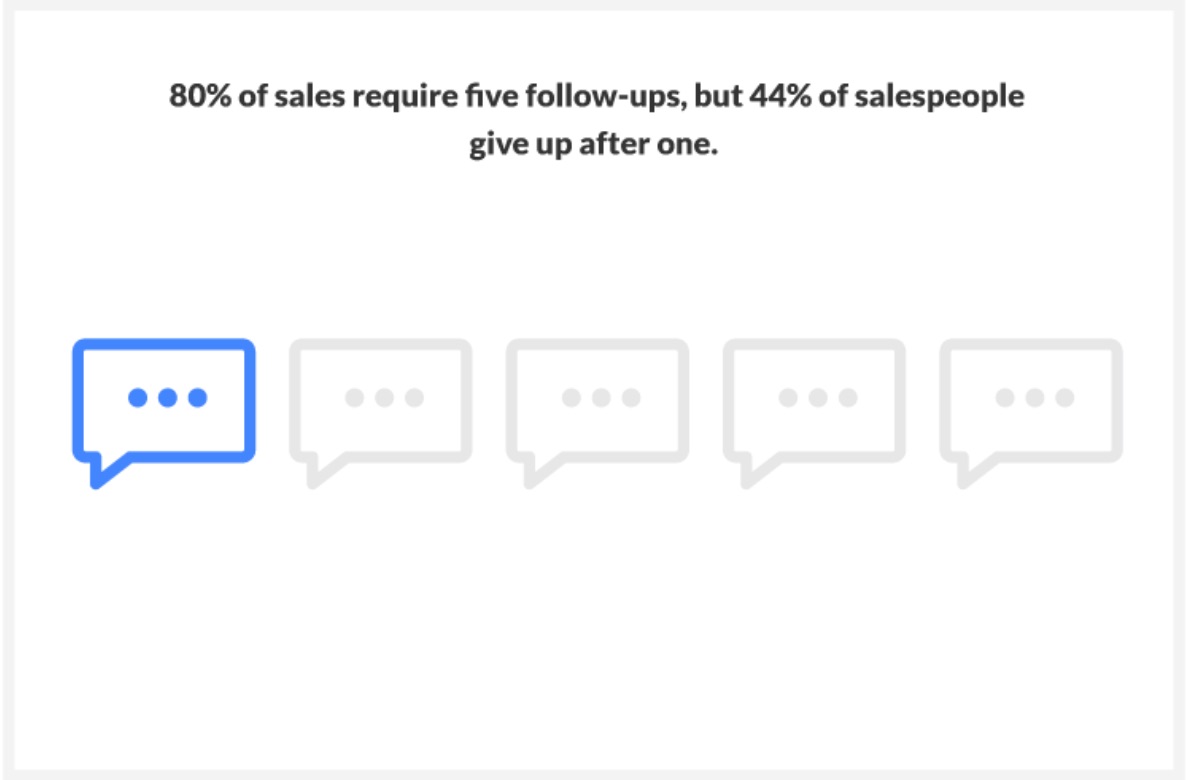
Wires get crossed. Your message could be missed. Your prospect could get distracted.
Especially on a social media platform, it’s common for your message to get buried beneath all the noise.
If you don’t send a follow-up message, you miss out on a potential customer.
You also waste time and effort it took to generate those leads.
When is the right time to send a subsequent message?
In our experience, three days is ideal for the first follow-up. You should check in with your prospects several times.
It can even be automated.
If you’ve collected email addresses, you can set up an autoresponder series.
This way, it becomes a hands-off process.
Businesses who use marketing automation experience a 451% increase in qualified leads.
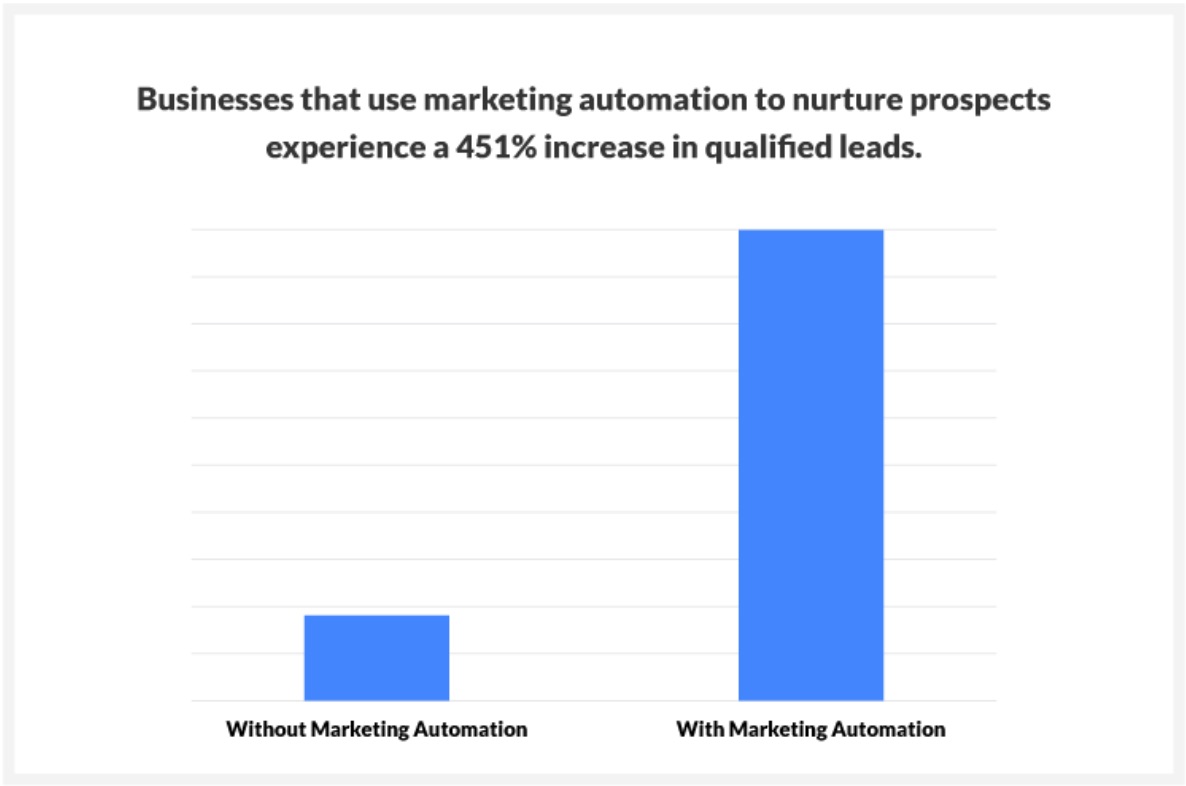
4. Put lead generation on autopilot with content marketing
One of the most powerful features on LinkedIn is its publishing platform.
You can publish content natively on LinkedIn Pulse, or you can republish posts from your business blog.
Either way, it’s one of the smartest strategies for generating leads.
For one, it allows you to demonstrate your expertise to potential customers.
There’s no better way to convert a customer than to show them how knowledgeable you are in your field.
It can also shorten the sales cycle.
Think about it.
If you’re consistently educating prospects and solving their problems with your free content, they’ll be easier to convert.
Doesn’t content marketing take time though?
It does, but here’s the thing.
You won’t find another audience as receptive as the network on LinkedIn.
The platform is filled with professionals waiting for you to educate them.
They are ready and willing to do business.
If you publish helpful content, your job is half done. You’ll be on your way to generating the kind of leads that turn into lifelong customers.
You can also repurpose content you’ve already published on your blog.
We’ve done this before, and it works exceptionally well.
Here’s some crucial advice for publishing content on LinkedIn:
- always leave a call to action and a link at the end of each article
- publish actionable content readers can implement to experience a quick win
- only create content that will serve your ideal prospect
- promote your LinkedIn articles on other platforms
- publish evergreen articles
5. Stop harvesting cold leads
This one takes the prize for time-wasters.
Here’s what many people’s idea of lead generation looks like:
- obtain a list of email addresses of people who may or may not be their ideal prospects
- send out emails or messages en masse
There are many things wrong with this approach.
The biggest is these people have not demonstrated an interest or a need for what you’re selling.
Your leads are not targeted enough, and they’re not qualified.
It means the chances of these leads converting to solid sales are slim.
The solution?
It’s a multi-step approach.
Step #1: Establish what you want your prospects to do
The first thing you need is a goal.
You’re generating leads, but what’s the purpose? What’s the next step?
You may want your prospects to download a free resource, schedule a free consultation, attend a webinar, hop on a call, or something of that sort.
Decide what your goal is before even starting the lead generation process.
Step #2: Create a hit list of hyper-targeted prospects
What’s the typical process for finding leads on LinkedIn?
You type in a job title in the search bar, hit enter, and get a plethora of results.
These become your targets, right?
That doesn’t work. You need to conduct a more focused search.
Here’s how.
First, click on the search bar and scroll to the bottom, where it says “search for people with filters.”

This will allow you to filter your results so you can focus on a targeted group of leads.
Your number of leads will be smaller, but their quality will be greater.
Here are some of the filters available:
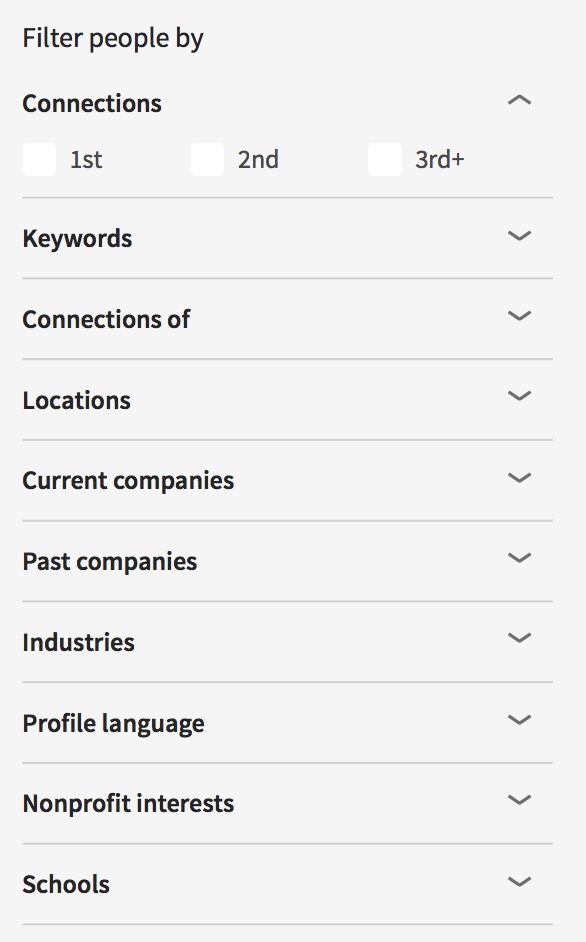
Step #3: Initiate contact
After you’ve put your hit list together, you can connect and send a personal message.
When you hit “connect,” some of the options will prompt you to enter an email address.
If you connect as a “friend,” this isn’t necessary, so select that option.
Also, ensure your connection request has a message attached to it.
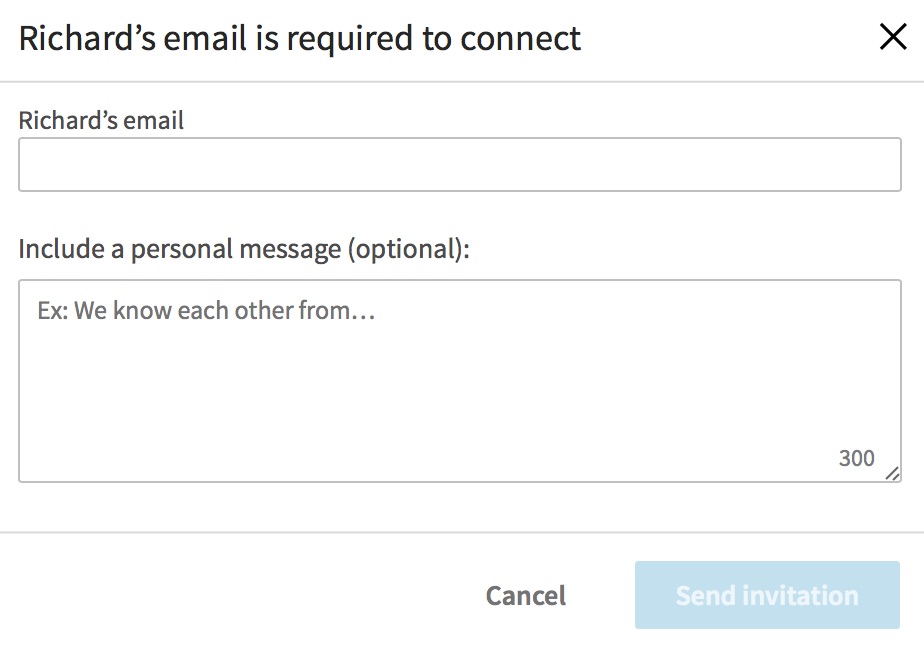
You only have 300 characters, but that’s more than enough to send a thoughtful message.
Don’t send the same generic message to every prospect.
You can still have a template to save time, but personalize it. I recommend going through the prospect’s profile so you have more information to go on.
Step #4: Build a relationship
It’s critical you continue to engage with your LinkedIn connections.
This could be by engaging with their content and sending them messages. That’s what’s going to set the stage for a sales conversion later on.
It’s only after you’ve gotten on your prospects radars that you can start thinking about selling to them.
Step #5: Funnel prospects to the top of your sales funnel outside of LinkedIn
LinkedIn should not be used to sell.
It’s a great prospecting tool. But you’ll sabotage your lead generation if you sell prematurely.
Use it to get prospects interested enough to join your permission marketing funnel. You can then take the sales process outside of the platform.
We know this sounds like a tedious and long road.
We promise you, this is way more effective than targeting a large list of unqualified leads.
You will get nowhere fast.
6. Craft a convincing opening message
When you reach out to someone you basically have two sentences or so to come across as a professional and explain why you want to connect.
Here’s what a good basic template looks like:
Hi (name), I came across your profile on LinkedIn and thought we might both benefit from connecting with each other. If you’re open to it, I’d love to connect. Thanks, (your name).
If you want to make it even better, look at their profile first, find something interesting that you can relate to, and mention that in your invitation.
Maybe you’ll see that they are located in a nearby city, so you could change your invite to something like this:
Hi (name), I came across your profile on LinkedIn and thought we might both benefit from connecting with each other. I see that you work in Austin, and I’m actually just down the road in Georgetown. If you’re open to it, I’d love to connect. Thanks, (your name).
That message is 258 characters long (maybe a bit longer or shorter, depending on names). The limit for a connection request is 300 characters, so you don’t want to write anything much longer than that.
7. Go premium
If you’re serious about using LinkedIn as your primary lead-generation tool, a premium account can serve you well.
It can increase your efficiency and save you time.
You’ve got several options, depending on your goal.

You’ll benefit from the features such as InMail, advanced search, and access to information about people who viewed your profile.
Sure, the free account allows you to filter your searches. But with a premium account, you can conduct even more advanced searches.
With InMail, you can message people not in your network.
You can also look at all the people who’ve viewed your profile. This is a great way of gathering warm leads.
These profile views represent people who have showed some interest in you.
There are other features, but these three are particularly useful.
Now, we’re not saying this is a must.
It’s not a necessity to have a premium account to succeed with lead generation.
In fact, before you invest in a premium LinkedIn account, you should test the platform.
If you see promising results, and you want to amplify your lead-generation efforts, premium is a solid path to take.
8. Join groups where your ideal prospects hang out
LinkedIn groups are gold.
There’s no better way to quickly and easily find quality prospects.
You can also create your own group. But that requires a time investment—you need to build the group and then maintain it.
If you want to save time, we recommend joining an existing group.
You want to select groups relevant to your industry. It’s also important to have an idea of your ideal prospect.
This way, you can target people who will be receptive to your message and, eventually, your product.
Here are some other things you should consider:
- group size – you want to target groups with a decent number of people so you have a large enough prospect pool
- level of engagement – group members should be active: interacting with content, starting conversations, etc.
- group rules – most groups have rules of engagement; some are stricter than others and don’t tolerate any promotional content.
How do you find these groups?
Conduct a group search.
Type in your keyword in the search bar, and select “Groups.”

You can also click on the “Work” tab in your top menu and click on “Groups.”
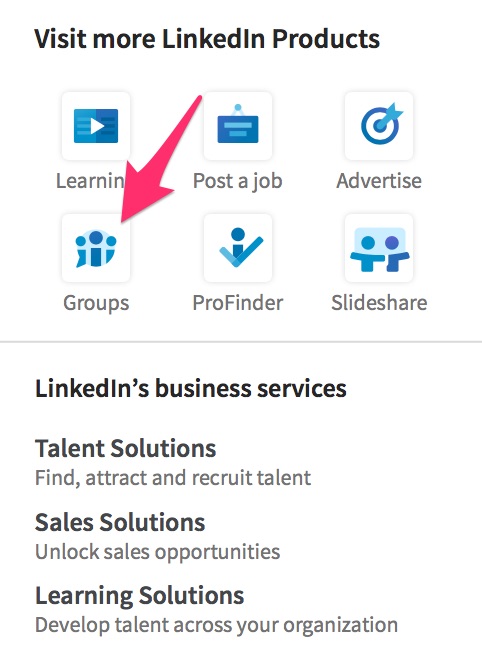
Then, click on “Discover.”
LinkedIn will display a list of groups:

By default, they’re filtered according to your industry.
Since our field is marketing, we automatically get shown a bunch of groups relevant to that field (no search necessary).
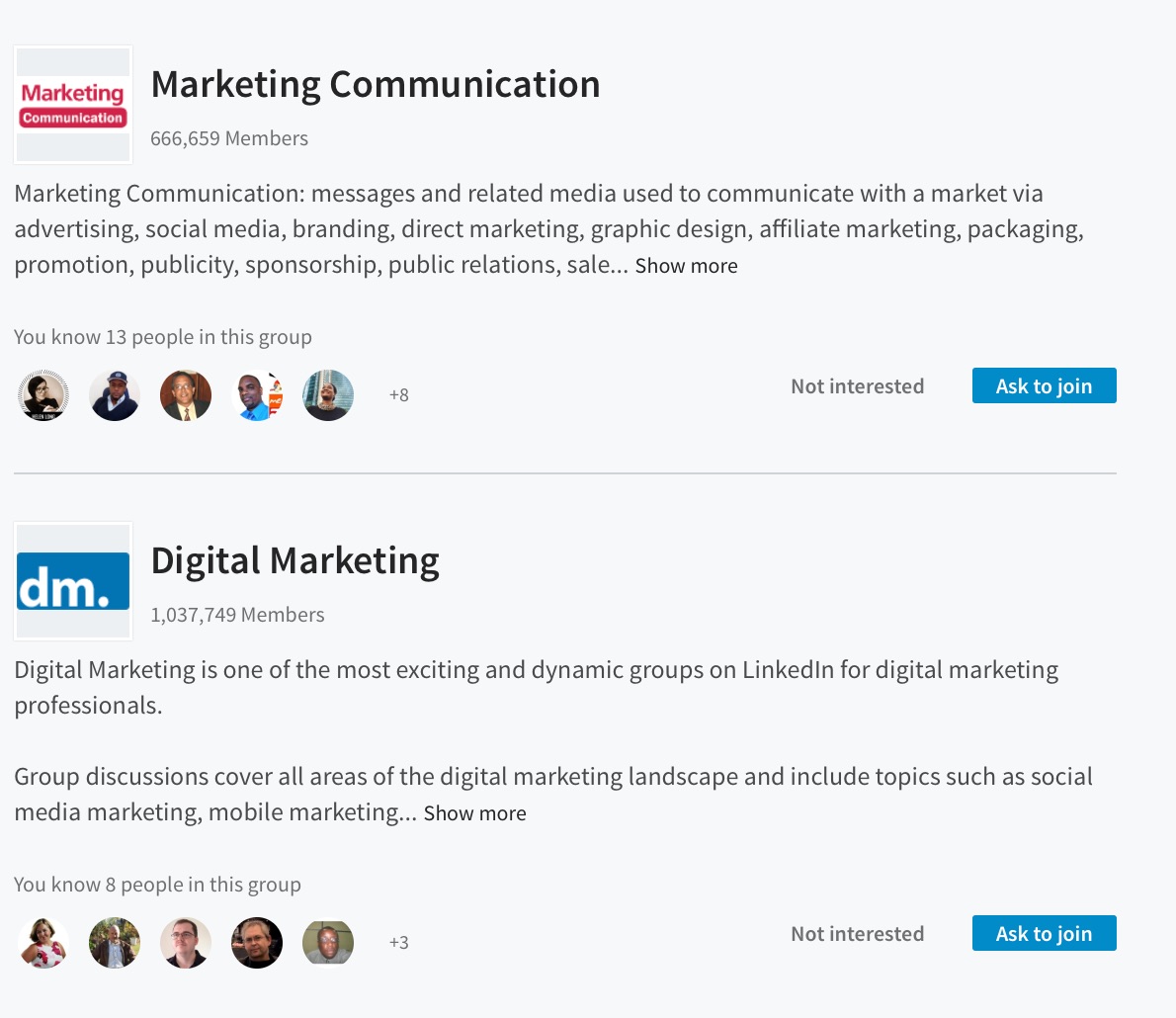
Click on the individual groups that interest you.
Read the “about this group” section to get familiar with them and their rules.
Check out the admins and the mutual connections you share with the group. If it seems it fits with your goals, go ahead and connect.
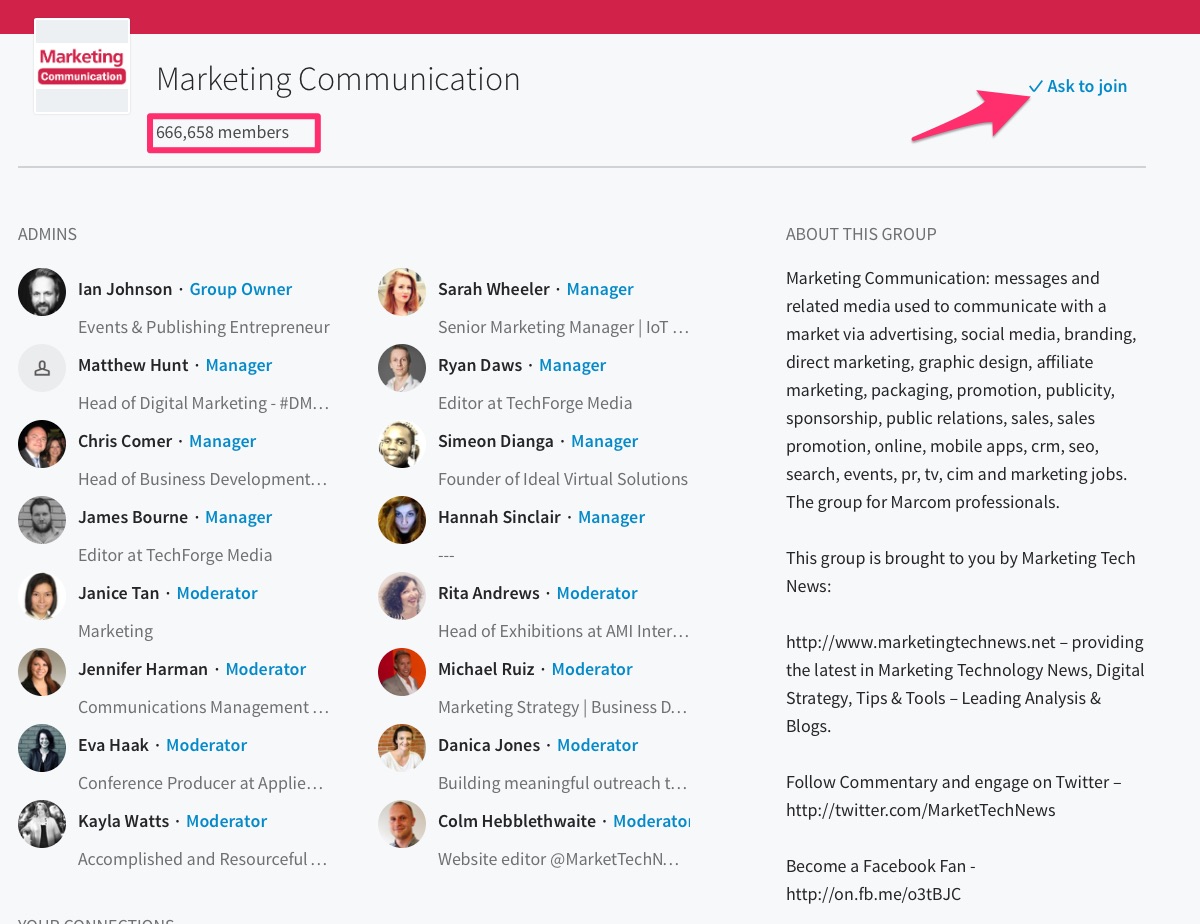
Conclusion
LinkedIn is hands down one of the best platforms for lead generation.
If you know how to work it, you can end up with some quality prospects primed to become your paying customers.
But as fruitful as lead generation can be, it is also a time-consuming task.
If you don’t use the right strategies to target the right people, it is easy to spend months and see no result.
We’ve pinpointed some of the biggest time-wasters and ways you can go through this lead-generation process quickly.
Use the strategies, and you’ll see more leads of a higher quality, without a massive time investment.
